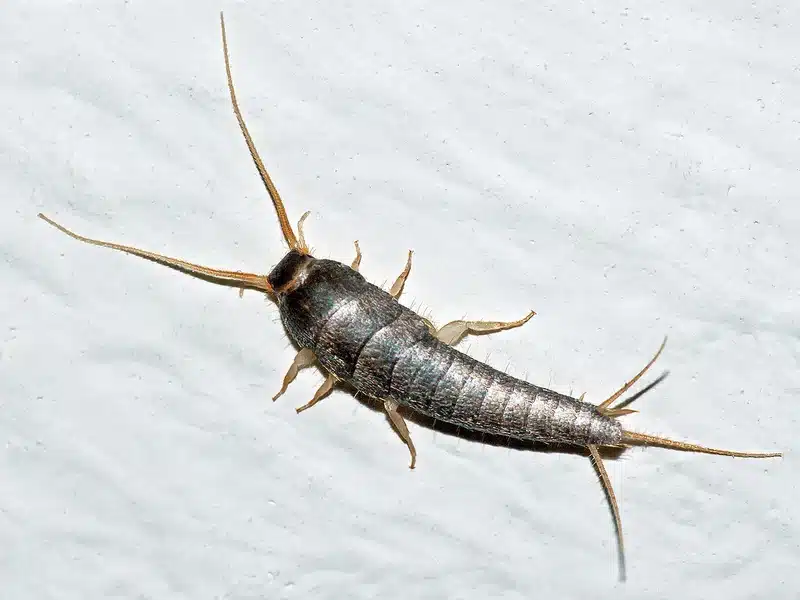Silverfish might be small, but they can cause big problems in your home. These metallic, carrot-shaped insects love to munch on books, clothing, and stored items. After four years working in pest control and seeing countless silverfish issues across the DMV area, I know how frustrating these persistent pests can be.
The good news? Effective silverfish control is absolutely achievable when you understand their behavior and use the right strategies. You just need to know what works and what doesn’t.
Understanding Silverfish Insect Basics
Silverfish (Lepisma saccharinum) belong to the order Zygentoma and are one of the most common indoor pests in Virginia, Maryland, and Washington DC. These wingless insects get their name from their silvery scales and fish-like movement patterns.
In the Mid-Atlantic region, we deal with two main species. Silverfish prefer cooler, damp areas like basements, bathrooms, and attics. Their cousins, firebrats, love hot spots around furnaces and water heaters.
The climate here creates perfect conditions for silverfish year-round. With average humidity around 65% in the DC area and summer morning humidity often exceeding 75%, many homes provide ideal breeding conditions for these pests.
Identifying Silverfish Infestation and Their Damage
Silverfish are easy to spot once you know what to look for. They measure about 1/4 to 1/2 inch long and have a distinctive carrot-shaped body covered in metallic scales. Three long bristles extend from their rear end, and they have lengthy antennae.
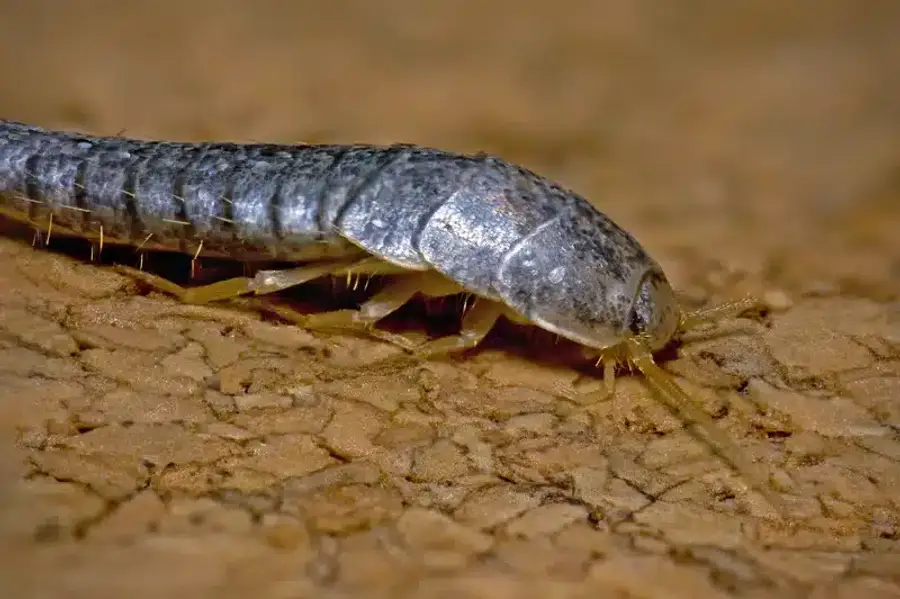
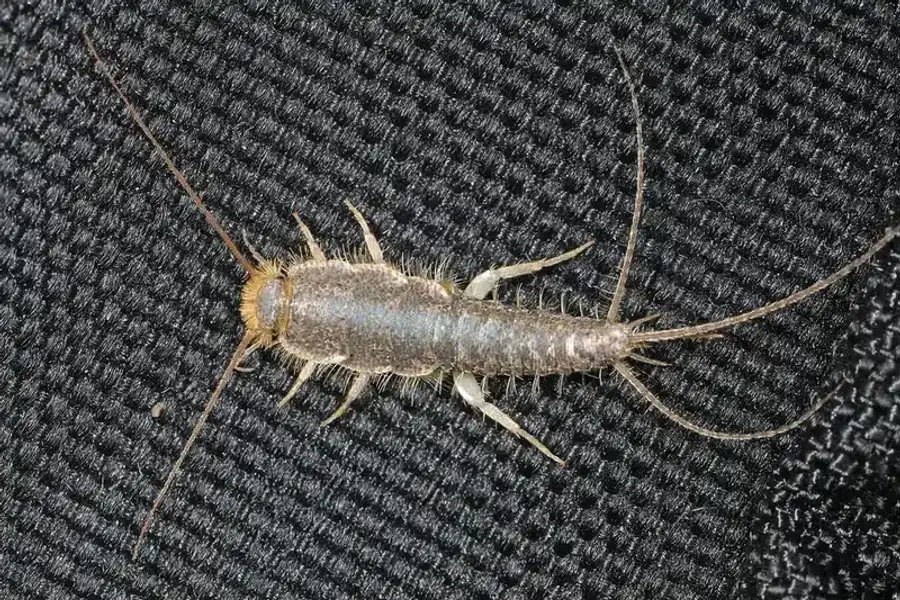
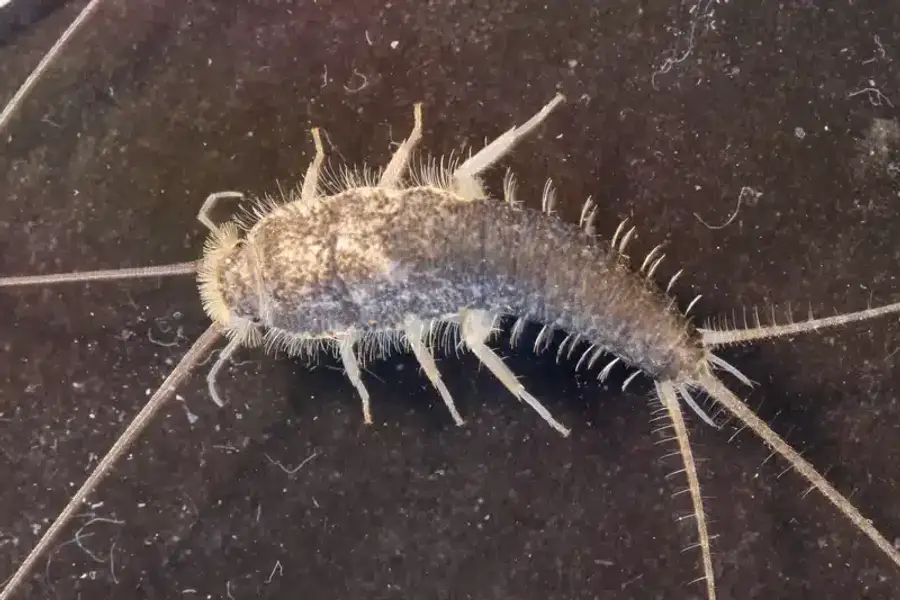
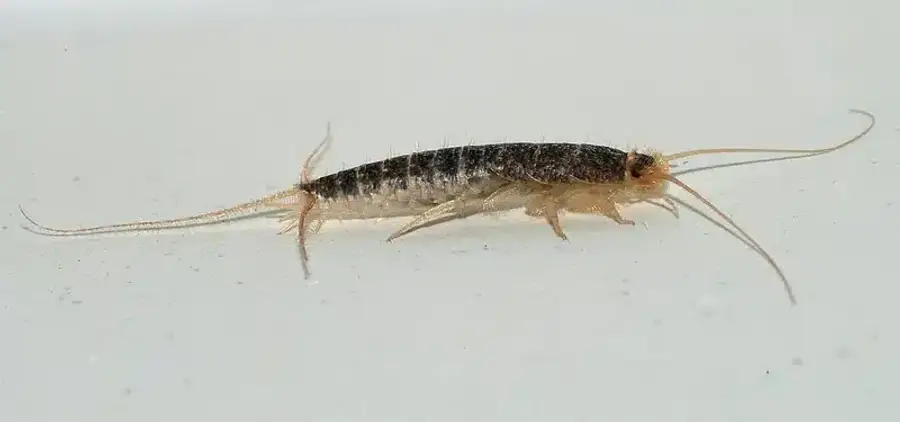
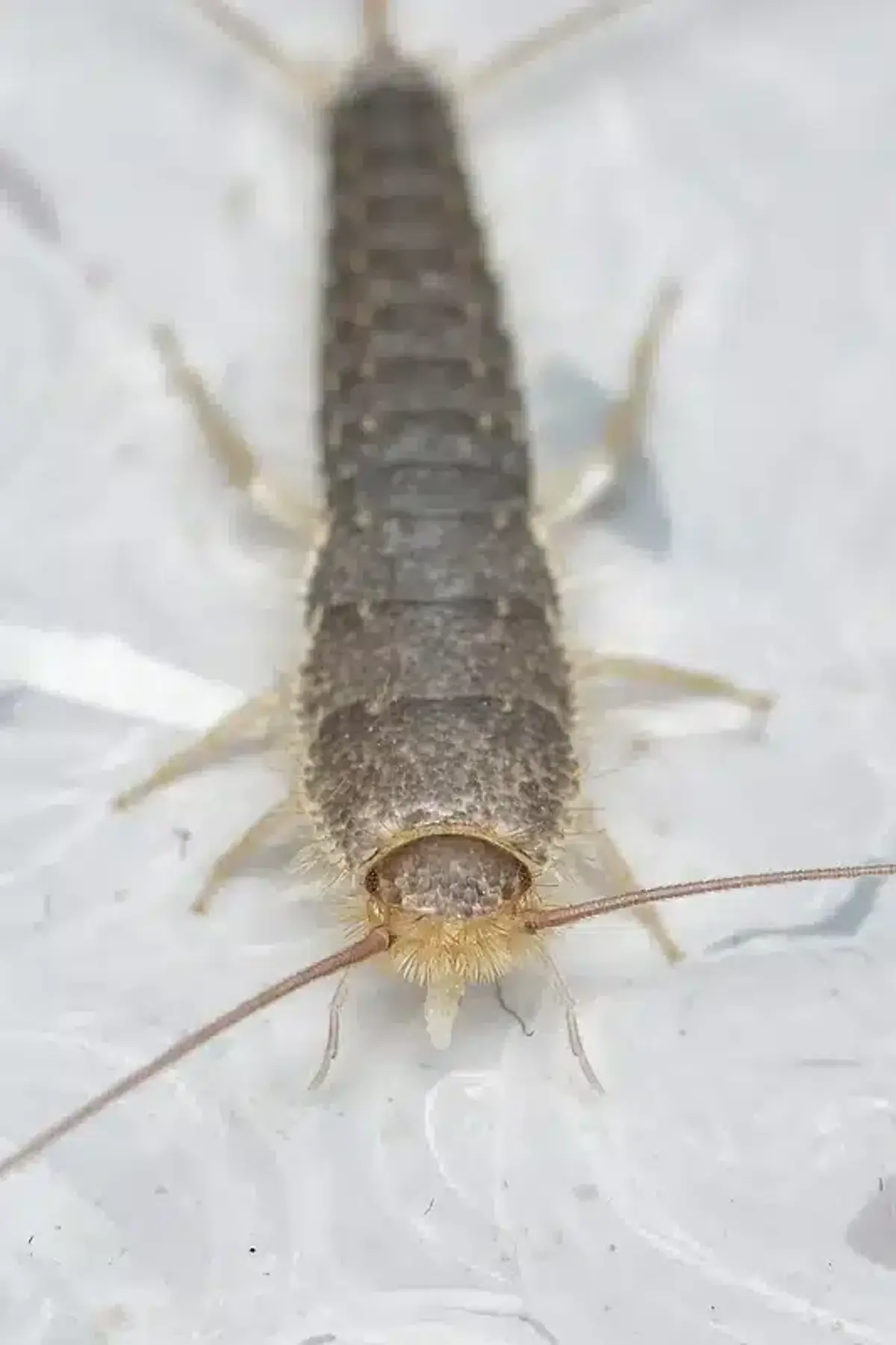
These nocturnal insects run extremely fast but cannot climb smooth surfaces like glass. You’ll often find them trapped in bathtubs or sinks where they’ve fallen in overnight.
The damage they cause is unmistakable. Look for irregular grazing holes in paper, books, and cardboard. You might also notice yellowish stains, tiny scales, and pepper-like fecal pellets around infested areas.
If you’re unsure whether you’re dealing with silverfish or another pest, check out our guide on centipede vs silverfish identification to learn the key differences.
Silverfish Life Cycle and Behavior
Understanding how silverfish reproduce is crucial for effective silverfish control. Unlike many insects, silverfish continue molting throughout their adult lives - sometimes up to 66 times total.
Females lay 1-3 eggs daily, typically depositing fewer than 100 eggs during their lifetime. Development time varies dramatically based on conditions - anywhere from 3-4 months in warm, humid environments to 2-3 years in cooler, drier areas.
Here’s the key insight: silverfish need humidity above 75% for successful reproduction. Eggs fail to hatch below 50% relative humidity at normal room temperatures. This fact becomes the foundation of effective silverfish control strategies.
These nocturnal pests hide in tight cracks during the day and emerge at night to feed. They’re particularly drawn to materials containing starch and protein. Learn more about their feeding habits in our detailed guide on silverfish diet.
Common Silverfish Hotspots in Homes: Attic, Closet, and Indoor Areas
After inspecting hundreds of homes in our service area, certain patterns emerge. Silverfish consistently show up in specific areas that provide the moisture and food sources they need.
Bathrooms top the list, especially in upper-level bathrooms in places like Dunn Loring where year-round activity is common. Basements and crawl spaces follow closely, particularly in areas with poor ventilation or water intrusion issues.
Attics represent another major hotspot, especially those with roof leaks or inadequate ventilation. Stored boxes, old books, and paper items in these areas often show significant damage.
Kitchens and pantries attract silverfish when humidity levels rise and food spills occur. Even small amounts of flour, cereal, or pet food can sustain populations for months.
If you’re finding tiny brown bugs in your bathroom and suspect silverfish, our bathroom pest identification guide can help you confirm what you’re dealing with.
DIY Monitoring for Silverfish Control: Glue Traps and Silverfish Traps
Before implementing any silverfish control measures, you need to understand the scope of your problem. Start with a thorough inspection using a flashlight to check bookcases, baseboards, and storage areas.
Pay special attention to areas behind furniture, under stored boxes, and around pipe penetrations. Look for the telltale signs: scales, fecal pellets, and damage to paper materials.
Set up monitoring traps to gauge population levels and identify hot spots. You can purchase sticky-board monitors or create simple glass-jar traps. For homemade traps, wrap the outside of a glass jar with masking tape and place oatmeal inside as bait.
Check traps weekly and record your findings. If you’re catching more than 5 silverfish per week after 8 weeks of treatment, you’ll need to reassess your moisture control efforts or look for hidden harborages.
Moisture Management Strategies
What does the research say about moisture control?
According to University of Maryland Extension research, moisture control forms the cornerstone of successful silverfish control. Silverfish need humidity above 75% for successful reproduction, and eggs fail to hatch below 50% relative humidity at normal room temperatures.
Your goal is maintaining indoor relative humidity below 50%. Install dehumidifiers in basements, crawl spaces, and other problem areas. Ensure bathroom exhaust fans vent outside, not into attics. Address any plumbing leaks immediately - even minor drips create the conditions silverfish love.
Check for sweating pipes and insulate them properly. In hot, humid weather, cold water pipes often develop condensation that provides the moisture silverfish need for reproduction.
Remove or properly store cellulose materials that attract these pests. Box up old papers, books, and seasonal clothing in sealed plastic containers rather than cardboard boxes.
For more detailed information about what creates ideal silverfish conditions, read our comprehensive guide on what causes silverfish issues.
Exclusion and Structural Repairs: Indoor and Outdoor Perimeter Protection
Physical exclusion prevents silverfish from entering your home in the first place. Seal cracks and crevices around baseboards, window casings, and utility penetrations using silicone or acrylic-latex caulk.
Weather-strip door thresholds, especially basement and exterior doors. Install fine mesh screens on soffit and gable vents to prevent outdoor harborages from spreading indoors.
In severe attic infestations, consider borate-treated insulation. This provides long-term protection and helps with overall moisture management.
Check the exterior foundation for gaps where utilities enter the home. Even small openings provide entry points for these remarkably flat insects.
Mechanical and Physical Controls for Insect Pests and Spider Repellent
Regular maintenance goes a long way toward silverfish control. Vacuum carpeted areas, bookshelves, and wall-floor junctions weekly. Dispose of vacuum bags immediately after use.
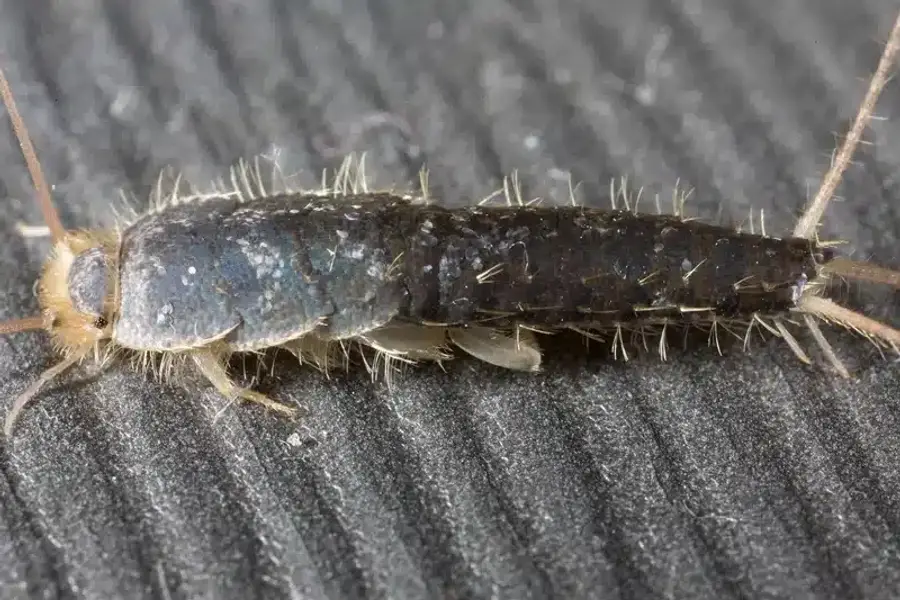
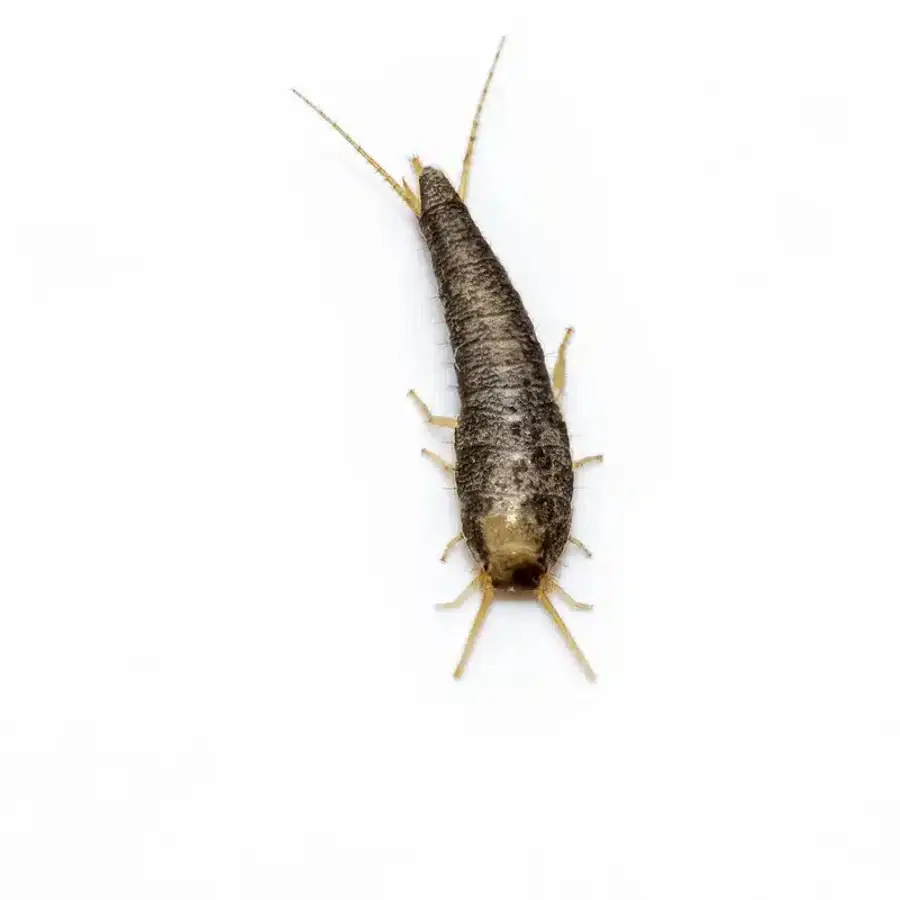
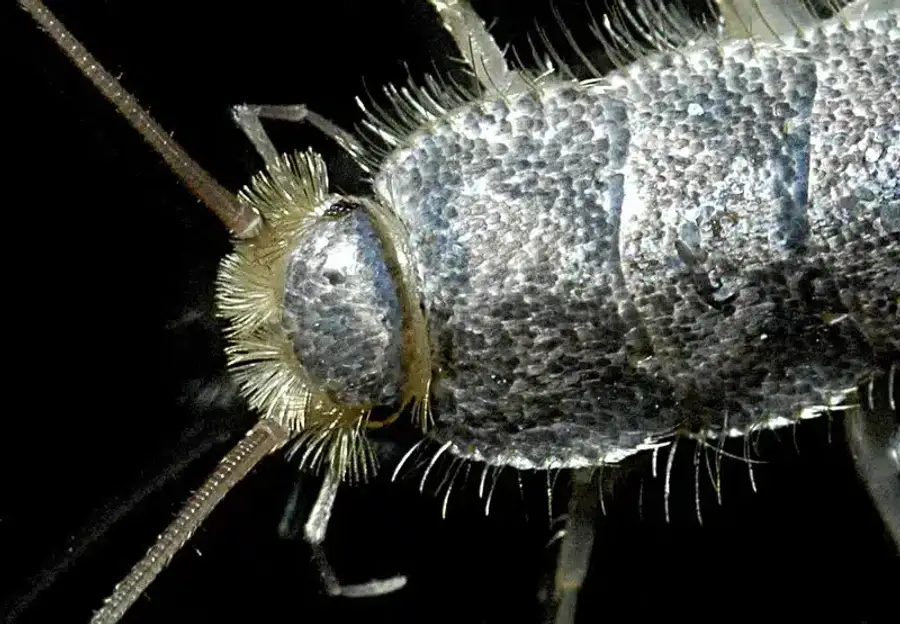
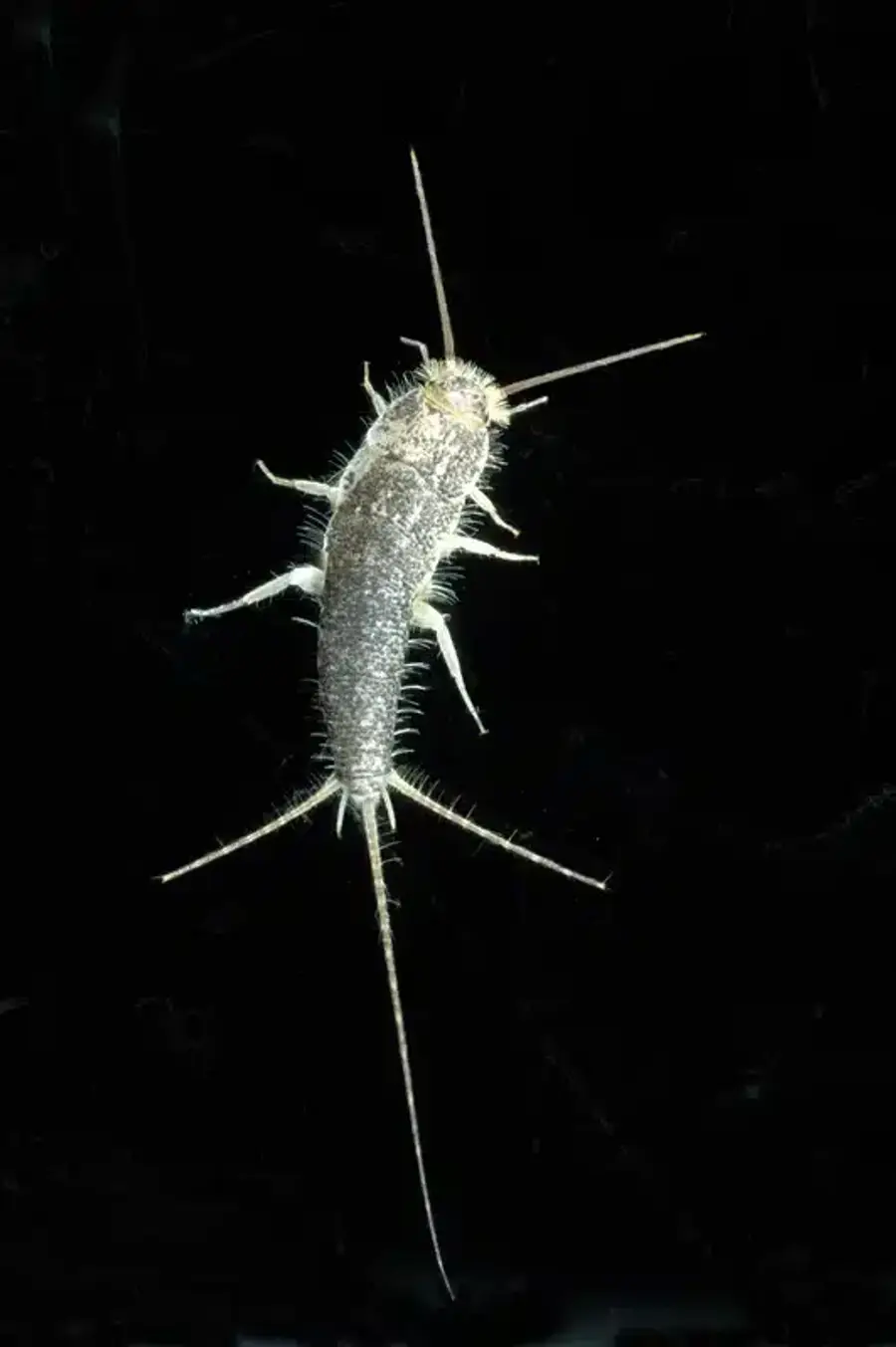
For valuable items like books or documents, heat or cold treatments can eliminate silverfish without chemicals. Expose items to temperatures above 113°F for several hours or freeze at -0.4°F for 5-7 days.
Place sticky traps strategically in areas of known activity. These provide ongoing monitoring and help reduce populations, though they won’t eliminate entire infestations alone.
Rotate stored items regularly to disrupt potential harborages. This simple step prevents silverfish from establishing permanent nesting sites in undisturbed areas.
Chemical Controls for Silverfish and Pest Control: Safe for Pets
When moisture management and exclusion aren’t enough, targeted chemical treatments become necessary. Non-chemical methods should always come first, but sometimes you need additional tools.
Desiccant Dusts and Diatomaceous Earth
How do desiccant dusts work against silverfish?
Virginia Tech Extension research shows that silica-gel dust and similar desiccant materials abrade the insect’s cuticle, causing fatal dehydration. This physical mode of action makes them highly effective for long-term silverfish control.
Apply desiccant dusts in wall voids, behind baseboards, and in attic spaces using a hand-duster. The goal is creating a barely visible film, not heavy deposits.
Diatomaceous earth represents another option, though it’s slower-acting and humidity-sensitive. You may need multiple applications in damp areas.
Boric Acid and Residual Sprays
Boric acid has been registered for pest control since 1948 and acts as both a stomach poison and desiccant. However, effectiveness declines significantly in high humidity environments.
Pyrethroid insecticides like deltamethrin and bifenthrin work well for crack-and-crevice treatments. Focus on areas where silverfish hide during the day rather than surface spraying.
Expect a 10-14 day delay before seeing full results as hidden nymphs continue emerging and contacting treated areas.
Emerging Bait Technologies
What does recent research show about silverfish baits?
Recent research published in the Journal of Economic Entomology examined various bait formulations for silverfish control. While promising ingredients like abamectin and fipronil show potential, field-ready bait formulations aren’t widely available yet. Current commercial baits containing boric acid, hydramethylnon, and indoxacarb show limited effectiveness compared to other treatment methods.
Professional Silverfish Control Services
Sometimes DIY efforts aren’t enough, especially in severe infestations or sensitive environments. Our family has been handling silverfish problems in the DMV area for over 50 years, and we’ve developed proven protocols that work.
The Better Method starts with a comprehensive 78-point inspection to identify all contributing factors. We don’t just treat the symptoms - we address moisture sources, entry points, and harborage areas that allow populations to thrive.
Our treatments use products that have passed through our internal research team. We’ve removed 9 of the harshest chemicals common in our industry, choosing alternatives that we’d feel comfortable using in our own homes.
Each treatment plan includes seasonal follow-ups to maintain control as conditions change throughout the year. Plus, if you spot any activity between scheduled visits, we’ll return at no additional cost.
When to Call Licensed Technicians
In Virginia, Maryland, and DC, certain treatment methods require licensed pesticide applicators. This is especially true for structural void treatments and commercial applications.
Learn more about identifying early-stage problems in our guide to silverfish larvae identification.
Long-term Prevention Strategies to Repel and Prevent Silverfish
Successful silverfish control requires ongoing vigilance. Monitor humidity levels monthly using digital hygrometers placed in basements, attics, and other problem areas.
Maintain your dehumidification equipment regularly. Clean filters, empty collection tanks, and check drain lines to ensure optimal performance.
Store susceptible materials properly. Use sealed plastic containers for books, important papers, and seasonal clothing. Cedar-lined chests provide natural protection for woolens and linens.
Inspect your home’s exterior quarterly for new entry points. Settling foundations, weather damage, and normal wear can create new access routes for silverfish.
Professional Monitoring and Follow-up
Our seasonal protection plans include regular monitoring to catch problems before they become infestations. Technicians check trap counts and humidity levels during each visit to ensure treatments remain effective.
We document temperature and humidity readings in critical areas to verify that environmental controls are working properly. This data helps fine-tune treatment protocols for your specific situation.
Annual reviews by our research team ensure we’re using the most effective products and methods available. We constantly evaluate new technologies and adjust our protocols based on the latest research.
For comprehensive information about silverfish biology and behavior, visit our detailed silverfish resource page.
Conclusion and Next Steps
Effective silverfish control combines multiple strategies targeting their need for moisture, food, and shelter. Start with moisture management and exclusion, then add targeted treatments as needed. Remember that silverfish infestations develop slowly, so expect control efforts to take several weeks or months for complete elimination.
The key is persistence and addressing all contributing factors, not just applying treatments. Monitor your progress regularly and adjust strategies based on what you observe.
Frequently Asked Questions About Silverfish Control
How do I get rid of silverfish permanently?
+
Permanent silverfish control requires an integrated approach combining moisture management, exclusion, and targeted treatments. Start by reducing indoor humidity below 50% using dehumidifiers and proper ventilation. Seal entry points around your home and remove cellulose materials that attract them. For severe infestations, professional treatment with desiccant dusts and residual insecticides provides the most reliable long-term control.
What attracts silverfish to my home?
+
Silverfish are primarily attracted to moisture and starch-based materials. High humidity levels above 75% allow them to reproduce successfully. They feed on paper, cardboard, book bindings, clothing with starch sizing, and even pet food. Cluttered storage areas with poor ventilation create ideal conditions for silverfish populations to establish and grow.
Can silverfish damage clothing and how do I protect my linens?
+
Yes, silverfish can damage natural fiber clothing, especially items with starch or sizing. They particularly target cotton, linen, and rayon fabrics. Protect your clothing by storing items in sealed plastic containers or cedar chests. Wash and thoroughly dry items before storage, and avoid using starch when laundering clothes that will be stored long-term.
Are silverfish harmful to humans or pets?
+
Silverfish pose no direct health risks to humans or pets. They don't bite, sting, or carry diseases. However, they can cause significant damage to books, important papers, clothing, and other household items. Some people may experience allergic reactions to shed silverfish scales, similar to dust mite sensitivities.
How long does silverfish control take to work?
+
DIY silverfish control typically takes 8-12 weeks to show significant results when moisture management and exclusion methods are properly implemented. Chemical treatments may show initial results within 2-3 weeks, but complete elimination often requires 2-3 months of consistent effort. Professional treatment programs typically achieve faster results, often showing substantial reduction within 4-6 weeks.
Do silverfish come back after treatment?
+
Silverfish can return if moisture problems aren't addressed or if new entry points develop. **Successful long-term control requires ongoing moisture management** and periodic monitoring. Professional treatment programs include follow-up visits specifically to prevent re-infestation and address any new conducive conditions that develop.
What's the difference between silverfish and firebrats?
+
While both belong to the same insect order, silverfish prefer cool, damp areas while firebrats thrive in hot, dry locations near heat sources. Firebrats are slightly larger and have more distinct body markings. **Both species require similar control methods**, though firebrats may need treatment around furnaces, water heaters, and other warm areas.
Can I use essential oils for silverfish control?
+
While some essential oils like cedar and lavender may provide minor repellent effects, they're not reliable for silverfish control. These products don't address the root causes of infestations and typically provide only temporary deterrent effects. **Effective control requires addressing moisture issues and using proven treatment methods** rather than relying on home remedies.
How do I know if my silverfish problem is severe?
+
Severe silverfish infestations typically involve finding multiple insects during daytime hours, extensive damage to stored items, and catching more than 10 silverfish per week in monitoring traps. You might also notice large quantities of scales and fecal pellets in storage areas. **If you're seeing silverfish regularly despite control efforts**, it's time to consider professional intervention.
Why do I keep finding silverfish in my kitchen?
+
Kitchens attract silverfish when humidity levels are high and food sources are available. Common attractants include spilled flour, pet food, and paper packaging. **Check under sinks for plumbing leaks** and ensure your dishwasher isn't creating excess moisture. Store dry goods in sealed containers and clean up food spills promptly to reduce attractants.
With five years of hands-on experience in the pest control industry, George Schulz is a registered technician with the Virginia Pest Management Association and a proud third-generation professional in a family business that’s been protecting homes for over 57 years. He manages and trains a team of service pros while also leading internal research efforts—recently spearheading a deep-dive review of thousands of documents on pest control materials to hand-pick the most kid and pet friendly, most effective solutions tailored specifically for homes in the DC metro area.
